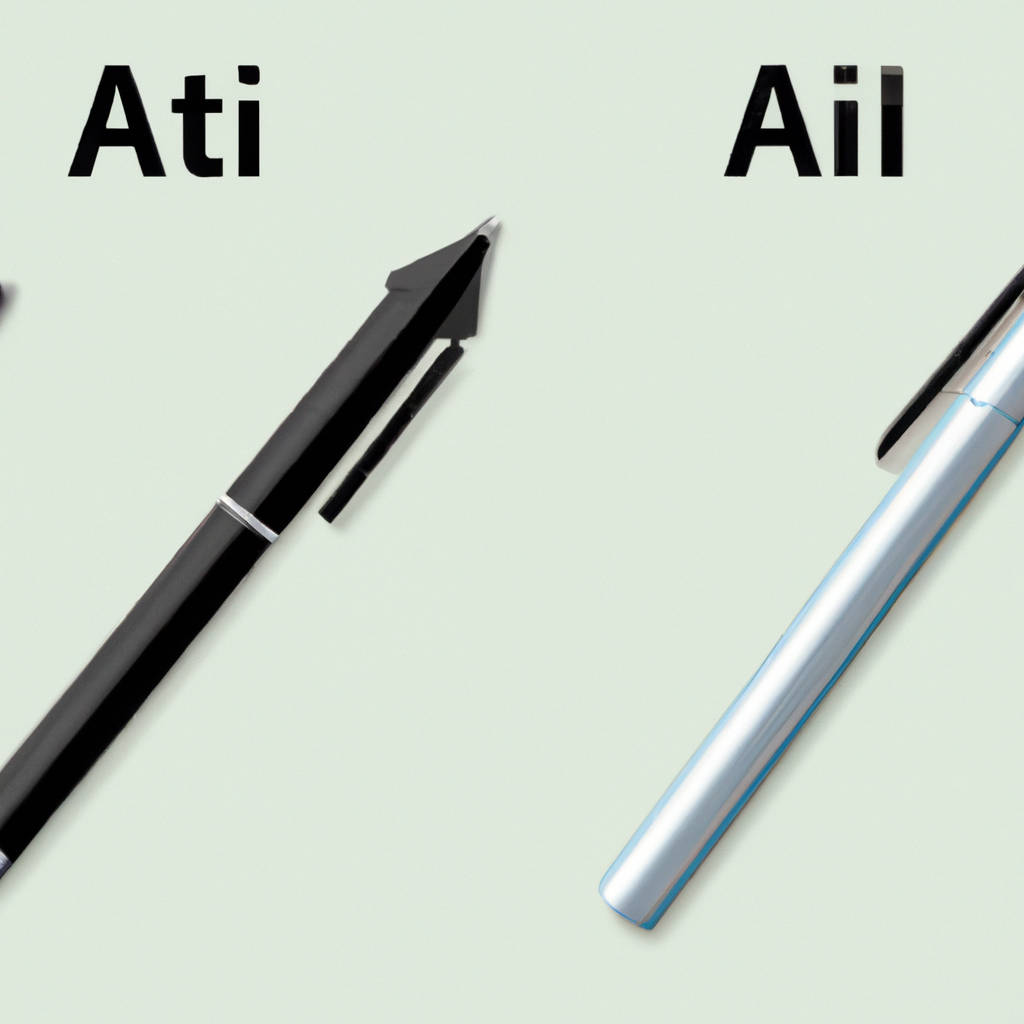Introduction to Novel AI: An Overview
Introduction to Novel AI: An Overview
Artificial Intelligence (AI) has become an increasingly prevalent and powerful force in today’s society, revolutionizing industries and shaping the way we live and work. Novel AI refers to the cutting-edge technologies and advancements that are pushing the boundaries of what is possible with AI. These innovations are creating new opportunities for businesses, governments, and individuals to enhance efficiency, productivity, and decision-making processes.
One of the key aspects of Novel AI is its ability to learn and adapt in real-time, making it more dynamic and responsive than traditional AI systems. This allows for more personalized and tailored solutions to be developed, leading to improved outcomes and user experiences. Additionally, Novel AI is capable of processing and analyzing vast amounts of data at unprecedented speeds, enabling organizations to extract valuable insights and make informed decisions quickly.
Another important feature of Novel AI is its capacity for autonomous decision-making and problem-solving. By leveraging advanced algorithms and machine learning techniques, Novel AI can identify patterns and trends in data that may not be readily apparent to human analysts. This enables organizations to uncover hidden opportunities and mitigate risks more effectively, leading to better overall outcomes.
Furthermore, Novel AI is driving advancements in the fields of natural language processing, computer vision, and robotics, enabling machines to interact with humans in more intuitive and human-like ways. This has significant implications for industries such as healthcare, finance, and transportation, where AI-powered systems can assist in diagnosing illnesses, predicting market trends, and optimizing supply chains.
Despite the tremendous potential of Novel AI, there are also challenges and ethical considerations that must be addressed. As these technologies become more sophisticated and pervasive, questions around data privacy, security, and bias in AI algorithms have come to the forefront. It is essential for organizations and policymakers to establish clear guidelines and regulations to ensure that Novel AI is deployed responsibly and ethically.
In conclusion, Novel AI represents a paradigm shift in the way we interact with technology and the world around us. By harnessing the power of advanced AI technologies, organizations can unlock new possibilities and drive innovation in ways that were previously unimaginable. However, it is crucial that we approach the development and deployment of Novel AI with caution and foresight, to ensure that these technologies are used for the betterment of society as a whole.

Core Features and Functions of Novel AI
Novel AI, or artificial intelligence, is a rapidly evolving field that is revolutionizing the way we interact with technology. One of the core features of novel AI is its ability to learn and adapt to new information without being explicitly programmed.
This is made possible through machine learning algorithms that enable AI systems to analyze data, recognize patterns, and make predictions based on the information they have processed. Another key feature of novel AI is its ability to perform tasks that were previously thought to be exclusive to human intelligence, such as natural language processing and image recognition.
This has led to the development of AI-powered virtual assistants, chatbots, and recommendation systems that can assist users in various tasks and provide personalized experiences.
In addition to its learning capabilities, novel AI also possesses the ability to automate repetitive tasks and streamline workflows. This is achieved through the integration of AI into various industries, such as healthcare, finance, and manufacturing, where it can optimize processes and improve efficiency. For example, AI-powered robots are being used in warehouses to autonomously pick and pack orders, while AI algorithms are being employed in healthcare to analyze medical images and assist in diagnosing diseases.
Furthermore, novel AI has the potential to enhance decision-making by providing insights and recommendations based on vast amounts of data. By leveraging AI technologies such as predictive analytics and machine learning, organizations can make more informed decisions and better understand their customers, markets, and competitors. This can lead to increased competitiveness, improved customer satisfaction, and better strategic planning.
Overall, the core features and functions of novel AI are transforming the way we live and work by enabling machines to replicate and augment human intelligence. As AI continues to advance, it is essential for organizations to embrace this technology and harness its capabilities to drive innovation and growth.
User Experience and Interface Design
User experience and interface design are crucial components in creating a successful product or service. A well-designed user interface can greatly enhance the overall user experience, making it easier and more intuitive for users to interact with a product or service.
By focusing on the needs and preferences of users, designers can create interfaces that are visually appealing, easy to navigate, and responsive to user input. This not only improves user satisfaction but also increases the likelihood of users returning to the product or service in the future. Additionally, a well-designed interface can help to establish a strong brand identity and differentiate a product or service from its competitors.
By paying attention to the details of user experience and interface design, businesses can create products and services that are more engaging, user-friendly, and ultimately more successful in the market. In today’s digital age, where competition is fierce and user expectations are high, investing in user experience and interface design is essential for businesses looking to stand out and succeed.
Ultimately, by prioritizing user experience and interface design, businesses can create products and services that are not only functional and efficient but also enjoyable and memorable for users.

Performance and Accuracy in Text Generation
Performance and accuracy in text generation are crucial factors in determining the quality of the generated text. Performance refers to how efficiently the text generation system can produce output, while accuracy pertains to how closely the generated text aligns with the intended message or content. Achieving a high level of performance requires optimizing the algorithms and computational resources used in the text generation process.
This can involve improving the speed at which the system can generate text, as well as minimizing errors or inconsistencies in the output. On the other hand, accuracy in text generation involves ensuring that the generated text is grammatically correct, coherent, and relevant to the given input. This requires the text generation system to have a deep understanding of the language and context in which it is operating, as well as the ability to generate text that is contextually appropriate and meaningful.
Balancing performance and accuracy in text generation is a complex task that often involves trade-offs between speed and quality. However, by continuously refining and optimizing the text generation process, it is possible to achieve a high level of performance and accuracy in generating text that meets the desired standards of quality and relevance. Ultimately, the goal of text generation is to produce output that is both informative and engaging, while also being efficient and reliable in terms of performance and accuracy.
Use Cases and Applications of Novel AI
Novel AI technology has been revolutionizing various industries with its innovative use cases and applications. One prominent area where AI is making a significant impact is in healthcare. AI-powered algorithms are being used to analyze medical images, such as X-rays and MRIs, to assist doctors in diagnosing diseases more accurately and quickly.
This has led to improved patient outcomes and reduced healthcare costs. Additionally, AI is being used in drug discovery and development, helping researchers identify potential new drugs more efficiently. Another industry benefiting from novel AI is retail. AI-powered chatbots are being used to provide personalized customer service, while AI algorithms are analyzing customer data to predict trends and optimize inventory management.
This has resulted in increased customer satisfaction and higher revenue for retailers. In the transportation sector, AI is being used to optimize route planning and traffic management, leading to reduced congestion and emissions. Furthermore, AI-driven autonomous vehicles are revolutionizing the way people travel, with potential benefits in terms of safety and efficiency.
Overall, the applications of novel AI technology are vast and diverse, offering tremendous potential for improving processes and driving innovation across various industries. As AI continues to evolve and advance, it will be fascinating to see how it further transforms our world and enhances our daily lives.

Pricing Structure and Subscription Plans
Setting the right pricing structure and subscription plans is crucial for businesses to attract and retain customers. The pricing structure should be designed in a way that is appealing to customers while also ensuring profitability for the business. This can involve offering different tiers of subscription plans with varying features and benefits to cater to different customer needs and budgets.
By providing options for customers to choose from, businesses can increase their chances of converting leads into paying customers. Additionally, offering discounts or promotions for longer subscription commitments can incentivize customers to commit to a longer-term relationship with the business.
It is important for businesses to regularly review and adjust their pricing structure and subscription plans based on customer feedback, market trends, and competitor pricing strategies. By staying flexible and responsive to changes in the market, businesses can remain competitive and continue to attract and retain customers. Ultimately, finding the right balance between pricing structure and subscription plans is key to driving revenue and building a loyal customer base.
Comparison with Competing AI Writing Tools
When comparing different AI writing tools, it is important to consider various factors that can affect their performance and usability. One of the key aspects to consider is the user interface and ease of use of the tool. Some AI writing tools may have a more intuitive interface and better user experience compared to others, making it easier for users to navigate and utilize the tool effectively.
Another important factor to consider is the accuracy and reliability of the AI writing tool. Some tools may have a higher accuracy rate in generating content and providing suggestions compared to others, which can significantly impact the quality of the output. Additionally, the range of features and functionalities offered by the AI writing tool can also vary, with some tools providing more advanced capabilities such as natural language processing and sentiment analysis.
Furthermore, the pricing and subscription model of the AI writing tool can also influence the decision-making process, as some tools may offer more competitive pricing or flexible payment options compared to others. Overall, when comparing competing AI writing tools, it is important to consider a combination of factors such as user interface, accuracy, features, and pricing to determine which tool best suits your needs and preferences.

Advantages and Limitations of Novel AI
Novel AI technology presents a myriad of advantages in various industries, allowing for increased efficiency, productivity, and innovation. One of the key benefits of AI is its ability to process vast amounts of data at a speed and accuracy that surpasses human capabilities. This enables businesses to make data-driven decisions and optimize their operations for maximum performance. In healthcare, AI can assist in diagnosing diseases and developing personalized treatment plans, leading to improved patient outcomes. Additionally, AI-powered chatbots and virtual assistants have revolutionized customer service by providing instant and personalized support to users.
However, novel AI also comes with its limitations. One major concern is the potential for bias in AI algorithms, which can result in discriminatory outcomes, especially in areas such as recruitment, lending, and criminal justice. Another challenge is the lack of transparency and accountability in AI decision-making processes, making it difficult to understand how AI arrives at its conclusions. Additionally, the reliance on AI can lead to a loss of human skills and judgment, as well as concerns about privacy and data security. As AI continues to advance, it is crucial for stakeholders to address these limitations and develop ethical guidelines to ensure the responsible use of AI technology.
Overall, the advantages of novel AI technology are undeniable, with its potential to revolutionize industries and improve the quality of life for individuals around the world. However, it is important to acknowledge and mitigate the limitations of AI to ensure that its benefits are realized in a fair and ethical manner. By promoting transparency, accountability, and inclusivity in the development and deployment of AI, we can harness its full potential while minimizing the risks associated with its use.
Conclusion: Final Thoughts on Novel AI
In conclusion, the novel AI technology has the potential to revolutionize many aspects of our lives. It offers us the opportunity to automate tasks, improve efficiency, and enhance our overall quality of life. However, with great power comes great responsibility. It is crucial for us to carefully consider the ethical implications of AI technology and ensure that it is used in a way that aligns with our values and beliefs.
As we continue to develop and implement AI technology, it is important to prioritize transparency, accountability, and fairness. By doing so, we can ensure that AI technology is used in a way that benefits society as a whole and helps us to address some of the most pressing challenges we face. Ultimately, the future of AI technology is in our hands, and it is up to us to shape it in a way that reflects our values and aspirations. With careful consideration and thoughtful decision-making, we can harness the power of AI technology to create a better, more sustainable world for future generations.
